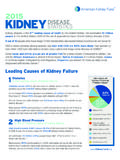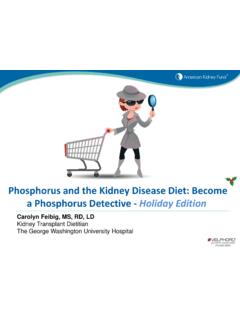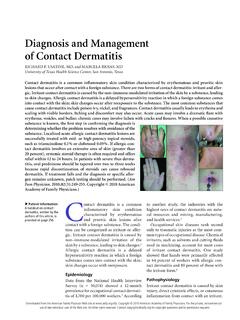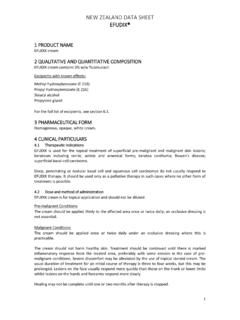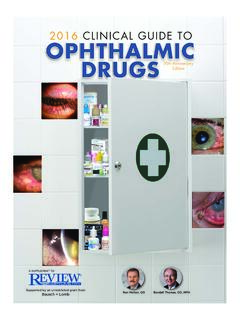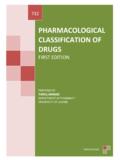Transcription of Pain Management in Patients with Kidney Disease
1 Pain Management in Patients with Chronic Kidney DiseaseRandy Chen, to our speaker!Randy Chen, Practicing nephrologist Serves as medical director for Satellite Healthcare Daly City Medical advisor for Satellite Healthcare, Inc. in the medical clinical affairs divisionPain Is a Big Problem! Pain affects more than 100 million people in the Pain-related costs are over $100 billion dollars in the Pain-related expenditures are more than those for diabetes, heart Disease , and cancer COMBINED. The opioid epidemic has taken thousands of lives (130 lives daily), and causes an economic burden of over $78 billion dollars a year. Understanding and effectively treating pain is Causes Pain?
2 Nerve fibers, chemicals, and the brain are all involved in this process. Pain receptors get activated by different stimuli. Nerves are like cables that send the signal to the brain. The brain will interpret this signal as source: Arthritis FoundationWhy Do We Have Pain? It is our bodies way of telling us something is not right and that we should be aware of this. If we are injuring our bodies, we should know this. If I touch a hot stove, my brain tells me, you better move your hand or it will burn. If our organs are not doing well, there is a problem and sensing pain is an important signal. A heart attack will cause you pain in the Do We Have Pain?
3 Why is Pain More Common in People with Kidney Disease ? Pain is more common in CKD Patients than in the general population. Over 60% of hemodialysis Patients describe moderate or severe chronic pain (Davison, 2019) Half of dialysis Patients experience moderate or severe pain (Santoro et al., 2012) and (Raina et al., 2018) Dialysis can cause inflammation with the process of cleaning blood and worsen overall pain in the body. Common Sources of Pain in Kidney Disease and in Dialysis Patients Neuropathy Gout Needle insertion into dialysis access Metabolic bone Disease Inflammation caused by the process of dialysisWhen Pain is Hurtful?
4 It always hurts. It is our bodiestelling us that something is wrong. Sometimes our emotions will make this worse and we will interpret the pain as severe. When it starts to affect life and ability to do things, it can be devastating. We have ways to make the pain more of Pain Nocioceptive(mechanical) pain: Described as throbbing, pressure, dull, or cramping. Neuropathic(nerve) pain: Described as tingling, numbness, burning, or stabbing. Getting a better idea of the quality of pain is important for making a diagnosis and treatment of Types of Painin Kidney Disease Musculoskeletal pain: Pain in the muscles, bones and joints Example: osteoarthritis Inflammatory pain: Increased sensitivity caused by inflammation Example: infection, gout Mechanical pain: Pain from masses or compression Example: Kidney stone Neuropathic pain: Nerve pain Example: sciatica, shingles, diabetic neuropathy (burning feet)Visceral Pain Every organ in the body has pain receptors.
5 The intestines, heart, lungs, and kidneys can all sense pain. Your skin is an organ and has a significant amount of pain receptors. You feel pain when mechanical causes, inflammation, or injury affect an organ. This is a way to tell that something is not right Pain Organ pain can be sensed in parts of the body you may not expect. This pain seems like it may be coming from somewhere Versus Chronic Pain Acute pain:Sudden onset and usually caused by some process that triggers it then goes away. Tells the body to react and avoid injury. Example: touching a hot stove or stepping on a nail. Chronic pain:Usually a result of constant nerve stimulation with injury or inflammation of the nerve.
6 Example: Diabetic neuropathy and chronic lower back pain. Longstanding mechanical pain such as source: Military Health SystemWhen a Care Provider Asks Questions About the Type of Pain You Are They are trying to get to the root cause of your pain and what is causing your pain by getting a good history. They can examine you to see if you have inflammation or something specific causing your pain or if it is from nerve injury. This can lead to further examinations or testing if necessary such as blood tests or X-rays. They can figure out what would be good treatments, medications, local therapy (heat or ice).Medications for Mechanical (Nocioceptive) Pain Non-anti-inflammatory: acetaminophen, opioids (narcotics) Anti-inflammatory: NSAID s (ibuprofen, meloxicam), COX-2 inhibitors (celecoxib), steroids (prednisone) Topical agents: lidocaine, capsaicin cream, topical NSAID s (diclofenac gel)AKF does not endorse any particular brand, inclusion of any brand is for reference with NSAID and COX-2 Inhibitors Non-steroidal anti-inflammatory drugs or NSAID s can cause Kidney injury if used heavily or long-term, it is recommended that Patients with Kidney Disease avoid using NSAID s.
7 Ibuprofen: MOTRIN , Advil Naproxen sodium: Aleve , Naproxen (Naprosyn) Celecoxib: Celebrex Other NSAID s: meloxicam (Mobic ), diclofenac (Voltaren ), indomethacin (Indocin ) Sometimes, the Kidney injury is temporary and sometimes it s permanent. But the risk is high for injury in Patients with Kidney does not endorse any particular brand, inclusion of any brand is for reference for Nerve (Neuropathic) Pain Gabapentin (Neurontin ) Tricyclic Antidepressants Example: amitriptyline (Elavil ) Anti-depressants Example: duloxetine (Cymbalta )AKF does not endorse any particular brand, inclusion of any brand is for reference should you manage your pain?
8 Overall better quality of life Being able to do physical activities you enjoy Improved mental health Improved sleep patterns Higher survival rateGabapentin Very commonly prescribed for nerve pain. Works in the brain and interferes with the signals that the brain interprets as pain. How it works is complicated and not completely known. It has been shown to be effective in such things as diabetic neuropathy and shingles Products Cannabis or marijuana products have gained some popularity in pain Management . There is ongoing research into the use of CBD oil as a treatment for pain. Good research studies have not yet been performed or verified in Kidney Disease Patients .
9 The lack of quality assurance and FDA regulation makes getting a quality product and Opioids Can be very effective for pain control in acute and chronic pain. Addiction and abuse potential is a huge concern. Can accumulate and the physical side effects such as low blood pressure, constipation, depression of respiratory drive can be magnified. Narcotic analgesics can cause a person to feel high and this can be magnified in Patients with Kidney Disease as the drug can accumulate. In general, it is safest to start at a low dose and gradually increase the dose and frequency to avoid unwanted effects. Some medications can be dialyzed and some source: BritannicaNarcotic Pain Medicine cont.
10 Shorter acting medicine such as fentanyl may be a better idea than longer-acting medicine since Kidney Disease Patients can have issues with eliminating long-acting medicinefrom the body. Tramadol is a good consideration but not as effective as other narcotic analgesics for pain Analgesics Causes cooling or heating feelings and help to decrease the sensation of pain. Example: BENGAY Reduce substance P and decrease the pain transmission signal. Example: Capsaicin Cause direct anesthetic effects and decrease nerve conduction. Example: Lidocaine Anti-inflammatory effect to reduce the inflammation process. Example: diclofenac gel, creamAKF does not endorse any particular brand, inclusion of any brand is for reference and Cold RICE Rest, Ice, Compression, Elevation or RICE can help musculoskeletal injury.


